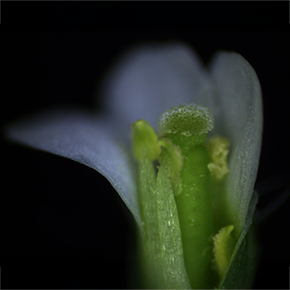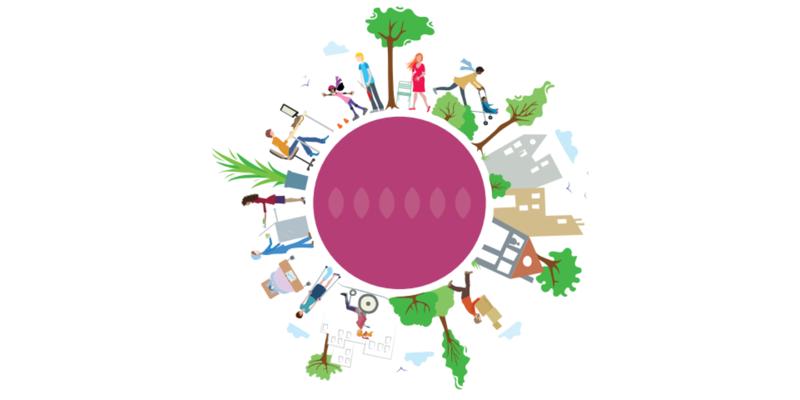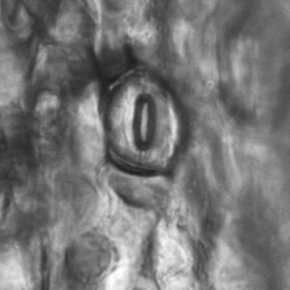- Share
- Share on Facebook
- Share on X
- Share on LinkedIn

Certain microorganisms such as bacteria have been selected and optimized by evolution to survive and function in extreme conditions, such as high temperatures. A theoretical and experimental study reveals the origin of these adaptation mechanisms and, above all, their limitations.

During a period of drought, the content of water in plants decreases. If the effects are not easily visible with trees and other lignified trees, on the contrary, it is very visible on certain plants such as Spathiphyllum, a popular interior plant.

Communiqué
The LIPhy associated with the new International Research Project ReMCoM
On December 12, 2025
The ReMCoM project, led by Kirsten Martens at LIPhy, is one of the International Research Projects (IRP) supported by CNRS Physics in 2025.

Conference
Active, Adaptive and Autonomous Matter (WE-Heraeus Summer School)
From July 6, 2026 to July 18, 2026
The school explores how living and synthetic active matter communicate, coordinate, and make decisions through physical, chemical and informational cues. Moving beyond contact and hydrodynamic interactions, the school focuses on chemical communication, quorum sensing, and informed active matter—three paradigms linking physics, chemistry, and biology. Emphasis is directed on how chemical signaling shapes collective motion, how cell populations self-organize through density-dependent feedback, and how agents can harness environmental information to optimize their behavior. By bridging active matter physics with biological regulation, the school aims to reveal new principles of organization in complex, living-like systems.

Accolade/Award
LACOSCOPE and NANOFAB win third prize in the ZEISS 2025 image competition
On December 4, 2025
The LACOSCOPE program was recognized in the ZEISS 2025 image competition, winning third prize for an exceptional image of plankton, revealing the complexity and beauty of lake ecosystems.

Meeting
General assembly of the REFIMEVE Research Infrastructure
From December 1, 2025 to December 2, 2025
The general assembly of REFIMEVE took place on December 1 and 2, 2025, at MaCI, on the Saint-Martin-d'Hères campus of UGA.

This is the challenge facing the ANR FULBOX project, led by Bastien Arnal, a CNRS researcher at LIPhy, which aims to develop new tools for imaging biological tissues in depth using photoacoustic imaging techniques.

Publication
Understanding the mechanical response of foams by observing individual bubbles
On November 5, 2025
By observing sheared foam under a time-resolved X-ray tomograph, researchers were able to observe how the rearrangements of bubbles in flow cause the overall mechanical response of the entire system.

Publication
Researchers reveal the mechanism by which copper nanoparticles degrade bacterial membranes
On November 4, 2025
An international team of researchers from LIPhy (Université Grenoble Alpes / CNRS), the Institut des Molécules et Matériaux du Mans (Le Mans Université / CNRS) and the Technische Universität Darmstadt (Germany) has shown that copper-based nanoparticles (Cu(OH)₂) can degrade bacterial membranes in presence of small amounts of hydrogen peroxide – amounts comparable to those naturally produced by the metabolism of bacterial cells.

Publication
Giant mobility of surface-trapped ionic charges revealed by sliding water droplets
On October 23, 2025
A team of researchers from ESPCI Paris (CNRS/PSL/Sorbonne Université) and the Laboratoire Interdisciplinaire de Physique (CNRS/Université Grenoble Alpes) combined high-resolution electrostatic mapping with molecular dynamics simulations to investigate the behavior of these surface-trapped ionic charges. They found that the ionic charges spread across the surface with astonishing mobility. Their two-dimensional diffusion far exceeds that of ions in bulk water, with the limiting factor being the friction between the ionic solvation shell and the solid.

An interdisciplinary team of researchers from Germany and the LIPhy has demonstrated that Tau, a neuronal protein known for stabilizing microtubule tips, plays an active role in modulating microtubule lattice dynamics. The study reveals that Tau significantly accelerates the exchange of tubulin within the microtubule lattice, especially at topological defect sites, despite lacking enzymatic activity. These findings challenge the traditional view of Tau as merely a passive stabilizer, showing instead that it increases lattice anisotropy and, in doing so, actively enhances microtubule lattice dynamics.

At the heart of the Arabidopsis thaliana flower, the pistil, formed of hundreds of papillae and an ovary housing the ovules, is surrounded by stamens that release pollen grains carrying male gametes. In an article published in PLOS Computational Biology, scientists combine theory and experiments to reveal how male gametes are guided toward the ovules from the very beginning of their journey on the surface of the female reproductive organ.

A team from LIPhy has studied the transport of CO2 within a liquid foam in contact with the atmosphere and shown how its effective diffusion in the medium emerges from the coupling between the structure of the foam and the transport of the gas through the soap films. This study paves the way for the development of low-cost CO2 filtration systems based on the ability of this main contributor to the greenhouse effect to dissolve more easily in water than most other gases.

Publication
The Matosthèque, LIPhy's initiative to reduce the environmental footprint of equipment purchases
On September 2, 2025
LIPhy is taking action to reduce the share of equipment purchases in its CO2 emissions! Over the past year, the laboratory has developed and implemented a new digital tool for sharing equipment: the Matosthèque.

Dental sensitivity is unique in that it is mediated by cells called odontoblasts, located in the dental pulp at the center of the tooth. According to hydrodynamic theory, the activation of odontoblastic processes is linked to the movement of fluids in the dentinal porosity induced by external stimuli. A new study conducted at the Interdisciplinary Laboratory of Physics (LIPhy - CNRS/UGA) shows that this porosity has all the characteristics of a complex network. Far from functioning as independent sensors, odontoblasts could therefore, in theory, adopt collective behaviors that are very different from the simple sum of individual responses.

Publication
Artificial intelligence for optical measurements at the ultimate limit of precision
On June 25, 2025
When light is scattered, how accurately can a measurement result be derived from that light? An international research team has explored the limits of what is possible using artificial intelligence.

A scientific team from Grenoble, involving the Laboratoire interdisciplinaire de physique (LIPhy - CNRS/UGA) and the Centre Inria de l'UGA, has developed a groundbreaking computational model that reveals universal laws governing how creatures swim across vastly different sizes and environments — from microscopic bacteria to massive blue whales.


In a recent work, researchers show that particles entrained in a flow close to a deformable wall undergo a force that moves them slightly away from it, an important result for the general understanding of transport phenomena in biology.

Accolade/Award
Laura Guislain receives the 2025 Academic Thesis Prize of Université Grenoble Alpes
On May 20, 2025
The 2025 Academic Thesis Prize of Université Grenoble Alpes has been awarded to Laura Guislain for her thesis entitled “Characterisation of out-of-equilibrium phase transitions with the emergence of limit cycles”, carried out at LIPhy and supervised by Eric Bertin.

Using laser nucleation of microbubbles, physicists have shown that stomata, the miniature 'gates' that regulate light-dependent evaporation in vascular plants, remain inactive in non-vascular plants such as mosses.

Cyanobacteria have an internal biological clock that rhythms their activities on a 24-hour cycle. Thanks to this finely regulated mechanism, these micro-organisms are able to anticipate day/night cycles. A study recently published in Scientific Reports looked at how this clock reacts when the temperature drops below 25°C, an important threshold for their physiology.

The OLIMPICS Federation celebrates its 1st anniversary!
On April 14, 2025

Publication
The interaction between macrophages and their environment affects their functioning
On March 27, 2025
Macrophages are immune system cells that ingest and degrade microorganisms and cellular debris in a process called phagocytosis. In a study published in iScience, scientists show that the mechanical properties of the tissues surrounding macrophages influence phagocytosis, which in turn affects the way macrophages interact with their environment.

Publication
Recording the absorption spectra of gaseous molecules with an optical cavity of high finesse
On February 20, 2025
To better understand the formation, composition and evolution of the atmospheres of terrestrial planets, scientists at LIPhy have developed spectrometers using optical cavity spectroscopy (CRDS). Their high sensitivity enables them to accurately record the absorption spectra of various molecules of atmospheric and planetary interest, such as dihydrogen, water or methane, mixed with carbon dioxide.

Inauguration of La Forge, shared assembly workshop
On January 31, 2025
La Forge, LIPhy's shared assembly workshop, was inaugurated on January 31, 2025.
- Share
- Share on Facebook
- Share on X
- Share on LinkedIn